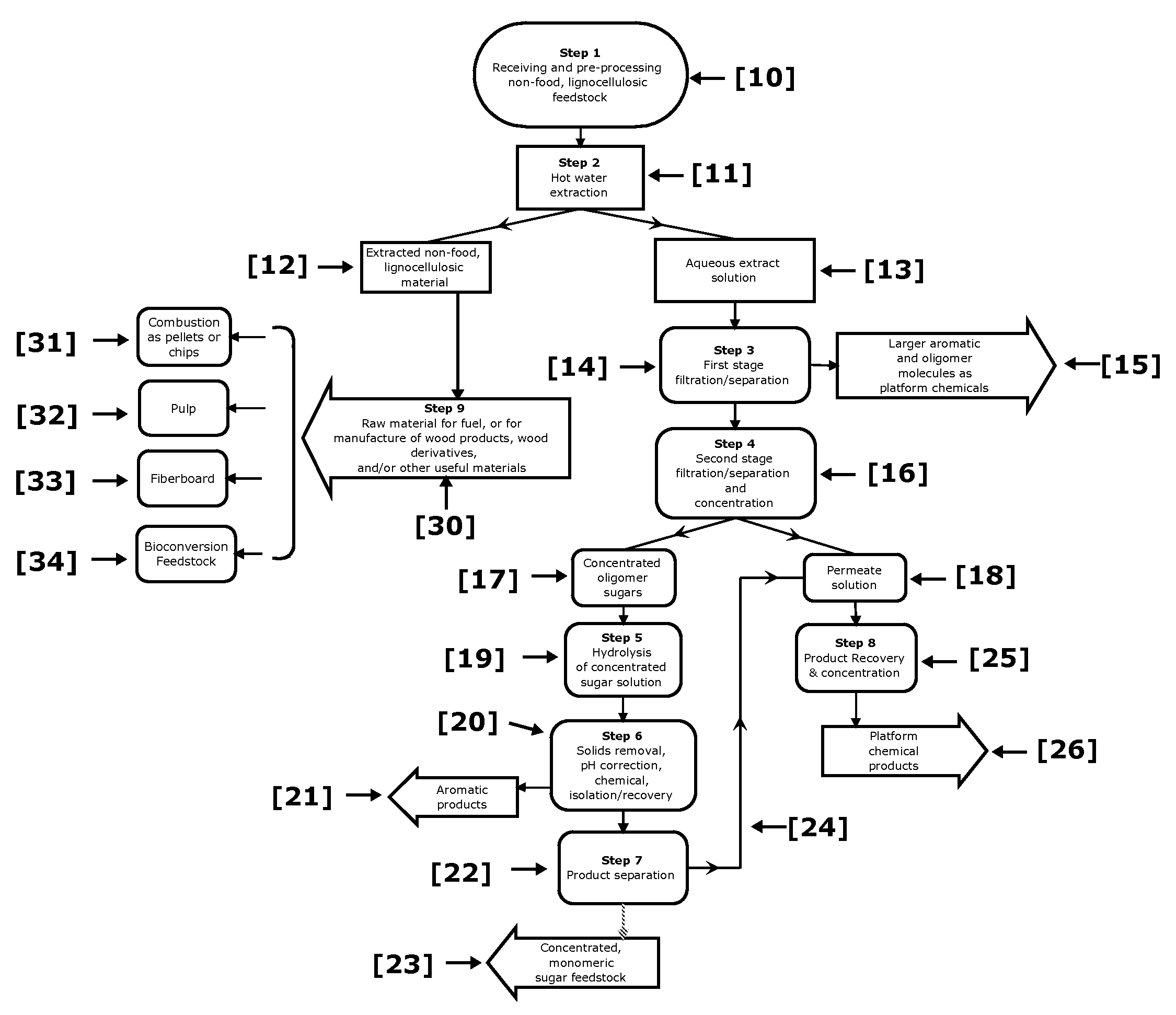Biorefinery process for extraction, separation, and recovery of fermentable saccharides, other useful compounds, and yield of improved lignocellulosic material from plant biomass
a biorefinery and saccharide technology, applied in the field of biorefinery process for extraction, separation and recovery of fermentable saccharides, other useful compounds, to achieve the effects of reducing hydrophilic components, increasing btu content per unit of weight, and being more resistant to absorption or adsorption
- Summary
- Abstract
- Description
- Claims
- Application Information
AI Technical Summary
Benefits of technology
Problems solved by technology
Method used
Image
Examples
Embodiment Construction
[0029]In an embodiment of the process, the wood-yard supplies woodchip feedstock and handles oversized material, dust, and tramp metals. Screening and magnetic separation can be used for this preparatory phase. Favorably, storage for up to forty-five days worth of green wood will be available to maintain feedstock supply to the extraction operation. Self-dumping trucks deliver wood chips to the facility, and the wood is automatically handled by conveyor and / or mobile equipment (skid-steer, front loader, etc.).
[0030]In another embodiment, the extraction of lignocellulosic materials via water-based autohydrolysis removes from 10 percent up to 35 percent (typically 23%) of the mass of the lignocellulosic materials in a continuous, semi-continuous, or batch process operation. The lignocellulosic materials are contacted with water at a temperature in the range of 20° C. to 250° C. and a pH in the range between 0.5 and 6.9 for a period of at least one second and up to about 200 hours, whe...
PUM
| Property | Measurement | Unit |
|---|---|---|
| temperature | aaaaa | aaaaa |
| temperature | aaaaa | aaaaa |
| temperature | aaaaa | aaaaa |
Abstract
Description
Claims
Application Information
 Login to View More
Login to View More - R&D
- Intellectual Property
- Life Sciences
- Materials
- Tech Scout
- Unparalleled Data Quality
- Higher Quality Content
- 60% Fewer Hallucinations
Browse by: Latest US Patents, China's latest patents, Technical Efficacy Thesaurus, Application Domain, Technology Topic, Popular Technical Reports.
© 2025 PatSnap. All rights reserved.Legal|Privacy policy|Modern Slavery Act Transparency Statement|Sitemap|About US| Contact US: help@patsnap.com

